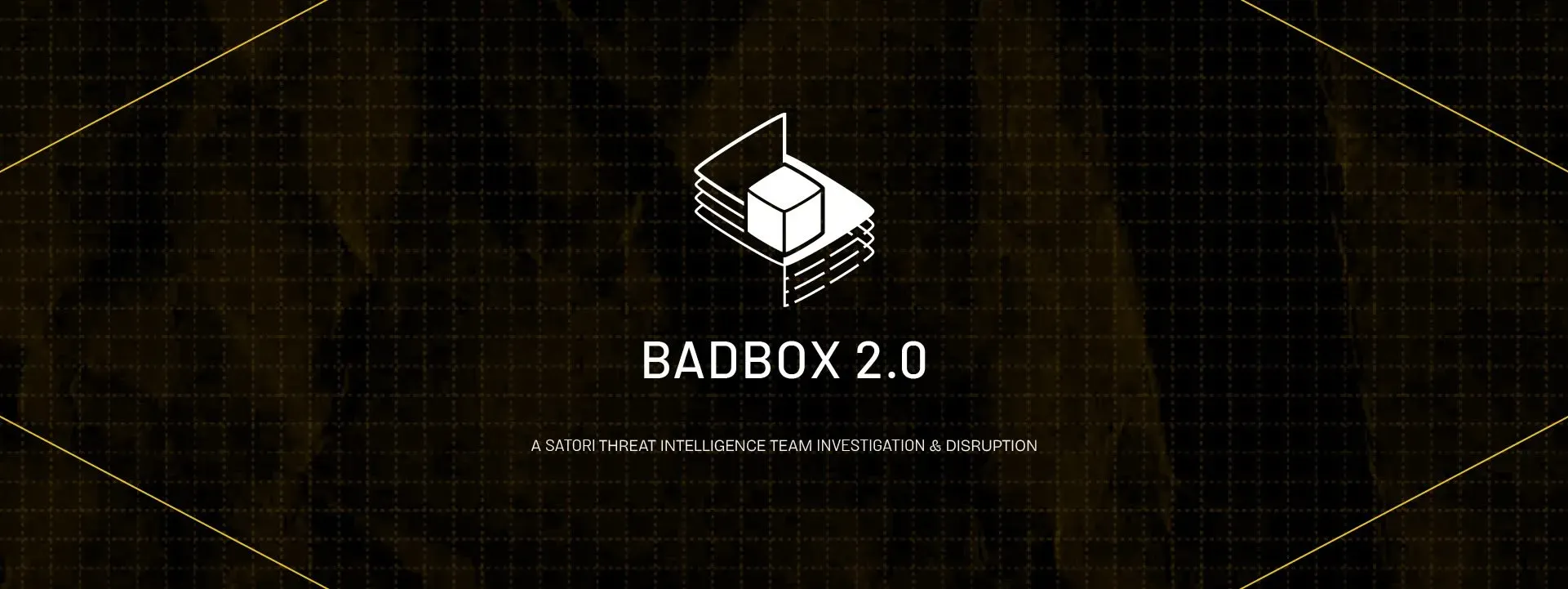Science and technology

Science and technology
Artificial Intelligence Saves Teachers: How Technologies Are Restoring Rest Days and Changing Education in Ohio
CLEVELAND, Ohio — Across classrooms throughout Ohio, teachers like Ana Sepulveda from a bilingual school in Dallas are ushering in a new era of education, harnessing artificial intelligence tools to transform lessons into engaging adventures. When Sepulveda wanted to connect geometry with her students' passion for football, ChatGPT generated a five-page lesson plan in seconds, bringing triangles and angles to life through football field design. “This is a turning point,” she said, standing before a sixth-grade class where students eagerly sketched their own stadiums. In a state where teacher burnout has reached critical levels, AI is becoming not just a tool but a lifeline, giving educators back time, creativity, and work-life balance.Gallup and Walton Family Foundation survey, published on June 25, 2025, showed that 60% of K-12 public school teachers in the U.S. used AI in the past school year, with Ohio reaching 65%, especially among high school teachers and early-career educators. With an estimated saving of about six hours per week on tasks such as lesson planning, test creation, and administrative work, AI helps reduce burnout, which has led 12% of Ohio teachers to leave the profession since 2020, according to the Ohio Education Association. “It’s like having an assistant who never sleeps,” said Mary McCarthy, a social studies teacher from Houston, who uses AI for tailoring materials and communicating with parents.Rethinking the ClassroomAI tools, from ChatGPT to specialized platforms like Canva AI, enable teachers to create personalized lessons, adapt materials for students with special needs, and even translate content for multilingual classes. In Cleveland, English teacher Darren Barkett uses AI to generate multiple-choice tests and evaluate essays, saving hours previously spent on manual grading. “I can focus on what really matters — inspiring students,” he said, adding that AI also helps detect work generated by students using chatbots, through pattern recognition and flawless grammar.In Columbus suburb Lindsay Johnson, an art teacher, uses school-approved AI tools to help eighth graders complete creative projects like portraits of influential people. She allows generative AI to create backgrounds but only after students have finished the main work manually. “My goal is to teach them to use AI as a tool, not a crutch,” Johnson explained, emphasizing the importance of maintaining creative control. Her approach reflects a broader trend in Ohio, where districts like Columbus City Schools have introduced AI training for teachers to promote ethical and effective use of technology.Challenges and CautionsDespite enthusiasm, integrating AI into education raises concerns. Gallup research showed that 52% of teachers worry that excessive AI use by students could weaken critical thinking and perseverance. In 2023, following the launch of ChatGPT, many Ohio schools, including Cleveland Metropolitan School District, temporarily banned AI over concerns about plagiarism. However, by 2025, most districts, supported by Ohio Department of Education guidelines, moved toward integrating AI with clear rules. For example, teachers’ lessons should remain the final voice in assessments, and AI is recommended for “low-stakes” tasks like multiple-choice tests, rather than for nuanced evaluations.Mayar Israel, an associate professor at the University of Florida, emphasized the importance of human judgment. “AI can grade a test in seconds, but it doesn’t understand the student’s context or emotions,” she noted, urging teachers to review AI results to avoid unfair assessments. Districts in Ohio, such as Dublin City Schools, have implemented policies requiring students to report AI usage in assignments to uphold academic integrity.Ohio at the ForefrontOhio, where 1.6 million students attend public schools, is becoming a leader in AI adoption in education. The state Department of Education issued guidelines in 2024 calling for districts to develop teacher training programs and set boundaries on AI use. For instance, in Akron Public Schools, teachers undergo training in platforms like Google Bard and Microsoft Copilot to create inclusive materials for students with diverse needs. “We’re not afraid of AI,” said Susanna Feips, Director of Innovation in Akron. “We are learning how to use it to prepare children for a world where AI will be everywhere.”However, not all districts are equally prepared. Rural areas, such as Lorain County, where access to technology is limited, have only 40% of teachers using AI, compared to 70% in urban centers like Cleveland, according to Gallup. Funding disparities and limited access threaten to widen AI implementation gaps, potentially exacerbating educational inequalities. “We can’t let AI become another barrier,” Israeli warned.Back to Basics and the Future of EducationFor teachers like McCarthy, AI has restored not just time but also joy in teaching. “My weekends are mine again,” she said, recalling how she used to spend Saturdays preparing lessons. Surveys show that 80% of teachers using AI report improved work-life balance, and 60% note higher-quality materials. In a state where a teacher shortage led to 3,200 vacancies in 2024, according to Ohio Department of Education, AI may be a key to retaining educators.While Ohio pioneers AI use, teachers like Sepulveda, Johnson, and Barkett demonstrate how technology can amplify human potential rather than replace it. From football fields to portraits, AI helps teachers craft inspiring lessons and reclaim time for creativity and relaxation. As this technology becomes an integral part of education, Ohio must ensure it serves all students and teachers—not just those with resources. In a rapidly changing world, Ohio’s classrooms are becoming laboratories of the future—and AI is their newest tool.
28.07.2025

Science and technology
Cleveland at the Center of a Cybersecurity Failure: State Audit Uncovers Alarming Shortcomings
The city of Cleveland, which has already fallen victim to destructive cyberattacks twice in the past year, received sharp condemnation from the Ohio State Auditor for failing to implement even basic cybersecurity measures. In a letter sent to Mayor Justin Bibb, the city council, and the audit committee, Ohio State Auditor Fabian Dalfın harshly criticized systematic deficiencies in the city's digital infrastructure security, pointing out gaps that leave Cleveland vulnerable to further attacks.
This year's cyberattack paralyzed the operations of the Cleveland Municipal Court and the Housing Court, forcing them to suspend activities temporarily. Just a year prior, another cyberattack led to the closure of the city hall, disrupting the city’s daily functions. According to experts, these incidents are not merely technical failures but evidence of a deeply ingrained indifference to cybersecurity in city management.
"The city has an official cybersecurity policy, but its execution has been inconsistent and chaotic," — Dalfın wrote in his report obtained by The New York Times. He emphasized that Cleveland not only fails to regularly review security reports but also has not implemented multi-factor authentication (MFA) in key structures such as the municipal court and the Department of Utilities. MFA, which requires users to verify their identity through multiple methods to access systems, has long been regarded as a standard security measure, similar to seat belts in cars, as noted by Alex Harmston, Director of Consulting Solutions at Trusted Sec.
"It’s shocking that in 2025, a major American city does not use MFA," — Harmston told The New York Times. "This is not just an oversight — it’s a systemic failure that puts citizens' data at risk, as they are required to interact with these systems without alternatives."
The audit report also called for the creation of a mandatory cybersecurity training program for all users of municipal networks, citing the lack of preparedness as a critical vulnerability. "The city must act immediately to prevent another catastrophe," — Dalfın emphasized, adding that the current state of affairs is "unacceptable" for a city of Cleveland's scale.
The city's response was restrained. A city hall spokesperson stated that Cleveland is "reviewing the report" and collaborating with state agencies to improve its practices. The municipal court, in turn, promised to provide a response by Friday but refused to comment on camera. Such restraint only heightened concerns about how seriously the city is taking the crisis.
Experts warn that Cleveland is not an exception but rather a symptom of a broader problem in municipal management across the country. "The public sector often lags behind the private sector in cybersecurity, but the stakes here are much higher," — Harmston noted. "Citizens cannot simply stop providing their personal data to the city as they might refuse a service from a private company."
As Cleveland prepares for the next round of reforms, the question remains open: can the city overcome its shortcomings before the next cyberattack causes even greater damage? For a community that relies on the stability of municipal services, the answer to this question is not only a matter of technology but also of trust.
22.07.2025

Science and technology
Decline of American Science: Proposed Budget Cuts Threaten the Future of Ohio Universities
Cleveland, Ohio — In laboratories at Ohio State University, where astronomers prepare for the Nancy Grace Roman Space Telescope launch, and in the medical centers of Case Western Reserve University, where researchers are developing new methods to fight cancer, hopes for scientific breakthroughs face a grim reality. The proposed cuts in federal funding by the Trump administration — a 47% reduction for NASA scientific programs, a 56% cut for the National Science Foundation (NSF), and significant restrictions for the National Institutes of Health (NIH) — threaten to deal a devastating blow to research institutions in Ohio. These cuts, which Congress is reviewing this week, July 3, 2025, could halt progress in medicine, astronomy, and technology, weakening the U.S. position on the global stage and leaving an entire generation of scientists without resources to continue their work.
Economic and Scientific Shock
The proposed 2026 budget, if approved by Congress, jeopardizes the future of seven Ohio research-focused universities, which, according to the Chronicle of Higher Education, could lose over $106 million solely due to NIH funding cuts. Ohio State University faces a loss of nearly $50 million, while Case Western Reserve University could miss out on $39 million. The University of Cincinnati risks losing $16 million, and smaller institutions such as Kent State University, Ohio University, University of Toledo, and University of Dayton will face cuts ranging from $148,000 to $1 million. According to Sara Kilpatrick, executive director of the Ohio Conference of the American Association of University Professors, the total NIH funding cut in Ohio could reach half a billion dollars. “These are not just numbers,” she said in an interview with News5Cleveland. “It’s job losses, brain drain, and a halt to research that saves lives.”
Similarly, NSF cuts are equally catastrophic. Since April 2025, over 1,600 active grants totaling $1.5 billion have been canceled, according to Grant Watch. These grants support fundamental research in fields like computer science, mathematics, and physics, which, in the words of Ohio State University astronomy professor David Weinberg, form the foundation of “a steady stream of medical miracles and technological breakthroughs Americans have become accustomed to.” He cautioned: “If these cuts go through, the era of American scientific leadership will essentially end.”
Impact on Astronomy and the Future of Science
Particularly painful are NASA funding cuts, which threaten flagship projects like the Nancy Grace Roman Space Telescope scheduled for launch in October 2026. This telescope, developed in part by Ohio State University’s astronomy faculty, aims to study dark energy and exoplanets. But a proposed 47% budget reduction could cut project funding in half, raising doubts about its completion. “We have a mission that’s nearly ready,” said Professor Todd Thompson. “The idea that it might not happen because of budget constraints is bad for science and for training students.”
Ohio State University’s Department of Astronomy, which trains 30 graduate students—more than half of whom depend on federal grants—may be on the brink of survival. “If funding is cut threefold, that’s the end,” Thompson said. “We won’t be able to support our students, which means fewer research opportunities and fewer highly qualified graduates fueling the economy.” According to the Federal Reserve, federal investments in research generate returns of 150% to 300%, supporting economic growth and job creation.
Medical Research Under Threat
NIH funding cuts, including restrictions on indirect costs up to 15% (although this initiative was temporarily blocked by a federal judge), threaten medical research in Ohio. Case Western Reserve University, known for its work on new cancer treatments and neurological disorders, already feels the impact. “These investments literally save lives,” said a university spokesperson in a statement. “Grant cuts affect our labs and teams working on breakthroughs in healthcare.” According to United for Medical Research, each dollar invested by NIH in research generates $2.56 in economic activity, making these cuts not only a scientific but also an economic disaster.
The University of Cincinnati, where researchers develop innovations in pediatrics and cardiology, could lose $16 million, threatening projects involving hundreds of students and supporting thousands of jobs in the region. “This will weaken Ohio as well as the entire country,” Kilpatrick emphasized. “We have always been at the forefront of scientific discovery, but these cuts place us in a vulnerable position on the world stage.”
Political Context and Community Reaction
The funding reductions are part of a broader Trump administration policy aimed at “eliminating ideological research” and increasing science efficiency, according to White House Office of Science and Technology Policy director Michael Kratsios. Critics, however, argue that canceling grants related to diversity, equity, and inclusion (DEI), as well as climate research, is a political maneuver that threatens fundamental science. In May 2025, federal judge Indra Talwani in Boston declared NSF restrictions on indirect costs “arbitrary and capricious,” giving universities a temporary reprieve. The fight continues, as Congress must approve the budget by the end of the week.
In Cleveland, which recently marked the 100th anniversary of Hopkins Airport and hosted cultural festivals such as “Opera in the Italian Garden,” these cuts are seen as a blow to the city’s ambitions to become a center of innovation. Local leaders, including City Council member Mike Polensek, urge Congress to reject the proposed reductions. “Ohio is not just the ‘Rust Belt,’” Polensek told Cleveland.com. “We are a hub of research and education, and these cuts threaten our future.”
Looking to the Future
Students like Amber McCoy from the University of Michigan, whose air pollution research was canceled due to NSF grant suspension, see these cuts as personal losses. Professors such as Terrell Morton of the University of Illinois, whose projects involve engaging Black students in STEM, are sounding alarms about the future of diversity in science. Ohio universities, from the state college system to Dayton, are preparing for staff and project cuts, which could lead to losing talented individuals to states with greater private resources, like California or Massachusetts.
As Congress prepares to vote, Ohio’s scientific community is mobilizing. Ohio State University and Case Western Reserve University have joined a coalition of institutions filing lawsuits against NSF and NIH cuts, citing violations of the America COMPETES Act, which mandates supporting diversity in STEM. “We cannot afford to let our scientific leadership fade,” Weinberg said. “This is not just about Ohio, but about America’s future.”
In a city that recently endured the tragedy at Euclid Beach and celebrated cultural festivals, these cuts serve as a reminder of the fragility of progress. If Congress approves the budget proposed by the White House, Ohio risks losing not only millions of dollars but also its role as a hub of innovation, leaving telescopes without data, laboratories unfunded, and students without a future in science.
12.07.2025

Science and technology
Invisible Enemy in Your Home: FBI Warns of a Botnet Taking Over Millions of Devices
KLEVELED, Ohio — Imagine: your television streaming device, digital photo frame, or even a car infotainment system that you purchased at a good price is secretly working against you. These everyday gadgets, cozy in your homes, could be part of a global cybercriminal network known as BADBOX 2.0. In a new warning, the Federal Bureau of Investigation (FBI) is sounding the alarm, stating that millions of Android devices, mostly manufactured in China, are being turned into pawns by hackers who use them for fraud, data theft, and concealing criminal activity. This threat lurking in the shadows of your home network challenges our notions of security in the era of smart technology.
The botnet hiding in gadgets
BADBOX 2.0 is an evolution of malicious software first discovered in 2023 on inexpensive Android devices such as T95 streaming boxes. German law enforcement disrupted the operation in 2024 by intercepting communications between infected devices and the hackers' servers. However, like a phoenix rising from the ashes, the botnet re-emerged in 2025, becoming even more insidious. According to the FBI, over 1.6 million devices across 222 countries—from Brazil to the USA—are already infected, and this number continues to grow.
The majority of affected gadgets are low-cost, uncertified Android devices running on the Android Open Source Project (AOSP), without Google Play Protect security. They include streaming boxes, projectors, digital photo frames, tablets, and even aftermarket automotive systems. Often these devices come pre-installed with malicious software, or infection occurs during setup when users unknowingly download counterfeit apps from unauthorized marketplaces. “This is not just a technical issue; it’s an invasion into our homes,” notes Gavin Reed, Chief Information Security Officer of Human Security, which detected BADBOX 2.0 in March 2025.
Once infected, the device connects to command servers operated by hackers, becoming part of a botnet used for various crimes: from ad fraud, where the gadget secretly “clicks” ads, to proxy networks masking cyberattacks, making them appear as normal home traffic. “Your IP can be used to attack banks or government agencies, and you may not even be aware of it,” warns Fyodor Yarochnyk, senior researcher at Trend Micro.
A global threat from Chinese factories
The FBI emphasizes that most infected devices are manufactured in China, where producers use vulnerable versions of Android that are not certified by Google. Some models, such as TV98 or X96mini, are even linked to Malaysian company Longvision Media, which, according to Human Security, used hidden browsers to simulate gaming activity and display advertisements. The highest infection rates are recorded in Brazil (37.6%), the USA (18.2%), and Mexico (6.3%), where inexpensive gadgets are popular.
This scheme is partially connected to the Chinese Lemon Group, known for using the Triada Trojan, which underpins BADBOX. Human Security researchers identified connections between botnet domains and the Dove Proxy proxy service owned by this group. “It’s not just hackers in a basement; it’s an organized industry earning millions from our devices,” says Emily Walker, a cyber analyst at Shadowserver Foundation, involved in efforts to dismantle the botnet.
Why is this important?
BADBOX 2.0 is not only a technical threat but also a symptom of a broader problem: vulnerabilities in the global technology supply chain. Cheap gadgets flooding the markets often sacrifice security for low cost, and consumers tempted by free content offers become easy targets. In 2024, an attempt by Google, Human Security, and other partners to block communication with 500,000 infected devices only had a temporary effect—within a week, the botnet was back, infecting 192,000 new gadgets, including products from well-known brands like Hisense and Yandex.
For Americans, this threat is especially relevant, as 146,000 infected IP addresses have been recorded in the US. “This isn’t just about your TV; it’s about your privacy and the security of your entire network,” emphasizes FBI Captain James Kelly, who is coordinating the investigation. He adds that the botnet could be used to attack critical infrastructure, from power grids to financial systems.
How to protect yourself?
The FBI urges Americans to check their gadgets for signs of infection: unusual internet traffic, requests to disable Google Play Protect, unknown apps, or pop-up messages offering free content. Experts recommend:
Purchasing only certified devices from reputable brands, avoiding “unlocked” streaming boxes.
Not downloading apps from unofficial marketplaces, even if they promise free access to Netflix or Disney+.
Regularly updating firmware and operating systems, especially after reports of vulnerabilities.
Using antivirus software, such as Bitdefender Mobile Security, and monitoring network traffic with tools like NETGEAR Armor.
If you suspect infection, the FBI advises to immediately disconnect the device from the network and report the incident via the Internet Crime Complaint Center (www.ic3.gov).
A look into the future
While the FBI and cybersecurity experts combat BADBOX 2.0, malicious actors are adapting, hiding malicious software in fake apps on Google Play under names like “Earn Extra Income” or in HTML5 games. This cat-and-mouse game underscores the vulnerability of the modern world, where every connected device is a potential loophole for criminals. For Americans accustomed to trusting their gadgets, this serves as a sobering reminder: in pursuit of cheap technology, we may unknowingly open the door to digital chaos.
02.07.2025

Science and technology
Ohio Against Deepfakes: How the State Is Trying to Save Truth in the Age of Artificial Intelligence
COLUMBUS, Ohio — In a world where the line between reality and fiction is blurring faster than one can click "share," Ohio legislators are taking a bold step to tame the chaos caused by deepfakes and artificial intelligence (AI)-generated content. Bill No. 185, proposed by representatives Adam Methuys (a Republican from Lebanon) and Taey Methuys (a Republican from Findlay), aims to establish clear rules for the digital landscape where malicious fakes can ruin reputations, undermine trust in elections, or even be used as tools for blackmail. As AI becomes increasingly accessible and fake videos and photos flood the internet, Ohio positions itself as a pioneer in the fight for truth.
“Artificial intelligence is improving every day, and it’s both a miracle and a threat,” said Adam Methuys, standing in front of the state Capitol. His bill, promoted amid rising concerns about disinformation, calls for clear labeling of AI-generated content if it can mislead a "reasonable person." From fake political speeches to manipulated images of celebrities — Ohio wants to draw a line between creative freedom and malicious lies.
The new reality of the digital age
The problem of deepfakes is not new, but its scale is rapidly increasing. According to Erman Aiday, a law professor specializing in technology at Case Western Reserve University, AI tools like Midjourney or DALL·E allow anyone to create realistic videos or photos in just minutes — from an innocent image of oneself on a tropical beach to a fake speech by a politician calling for a boycott of elections. “This technology democratizes creativity but also arms malicious actors,” Aiday notes. In 2024, for example, a fake AI-created video of Ohio Governor Mike DeWine went viral on social media, causing panic among voters ahead of local elections.
Bill No. 185 is aimed at giving back control to citizens. It defines the creation of malicious AI content without a person's consent as a violation of trademark rights, which could result in fines worth tens of thousands of dollars. Distributing deepfakes for extortion purposes is classified as a third-degree felony, and pornographic deepfakes or content involving children are strictly prohibited regardless of labeling. “This is about protecting ordinary people,” Methuys emphasized. “Your face, your voice — that’s your property.”
Implementation challenges
While the bill has garnered broad support, its implementation raises doubts. According to Aiday, anonymity in the digital world complicates tracking down malicious actors, especially during election campaigns where misinformation spreads rapidly. In 2023, for example, an anonymous Telegram channel circulated a fake video of Senator Sherrrod Brown, which caused his campaign considerable effort to debunk. “Until we have technology for instant deepfake detection, bad actors will hold the advantage,” Aiday warns.
Insiders in Capitol Hill report that both Republicans and Democrats support the bill, which is rare amid Ohio’s political polarization. However, some lawmakers express concerns about possible restrictions on free speech. “Political cartoons or satire are not the same as malicious deepfakes,” Methuys explained. “We want to protect creativity but prevent deception.” The bill explicitly excludes content that a “reasonable person” would immediately recognize as artificial, such as obvious cartoons or parodies, from regulation.
The broader context
Ohio is not alone in its fight. In 2024, California and Texas enacted similar laws regulating deepfakes in political advertising, but Ohio went further by covering a wider range of content, including personal images and audio. At the federal level, Congress is considering the Deepfake Protection Act of 2025, but its progress is slowed by disagreements over balancing free speech and disinformation prevention. “Ohio could become a model for other states,” Aiday believes, citing Ohio’s history of strict technology regulation, such as the 2018 data protection laws.
The issue transcends politics. In Cleveland, local activist Miah Jones became a victim of a deepfake that used her image for fraudulent advertising. “It was humiliating,” she recounts. “People thought I was endorsing something I had nothing to do with.” Such stories highlight the human dimension of the problem Ohio seeks to address.
Looking ahead
Bill No. 185, which is under review this week, could change the rules of the game for digital ethics in Ohio. If passed, it will be one of the first in the US to grant citizens ownership rights to their digital images. However, success depends on technological implementation — from improving AI detection systems to collaborating with platforms like X or TikTok to swiftly remove malicious content.
For Ohio residents increasingly facing digital manipulation, this law offers a ray of hope. “We cannot stop AI progress, but we can make it safer,” Methuys concluded. While debates continue, one thing remains clear: in a world where truth is a luxury, Ohio is betting on protecting reality — one photograph at a time.
17.06.2025

Science and technology
CES 2025: The Technological Revolution in the Era of Artificial Intelligence and Human Hope
In the glow of neon lights and the hum of innovations at CES 2025, the world’s largest technology exhibition gathered over 141,000 visitors from around the globe to showcase where humanity is headed. From robots that look like pets to AI-powered televisions and reimagined electric vehicles redefining mobility, the event held from January 7 to 10 became an arena for the ambitions and anxieties of the technological era. While companies from Nvidia to Hyundai demonstrated groundbreaking products, CES 2025 reflected a deeper narrative: a world where artificial intelligence (AI) becomes not just a tool but a partner shaping our future—raising questions about what it means to be human in the age of machines.AI Everywhere: From Televisions to RoadsArtificial intelligence dominated CES 2025, permeating every aspect of the exhibition, from consumer electronics to industrial solutions. Samsung introduced Vision AI for their TVs, allowing users to control devices via natural language, from selecting movies to planning vacations. Google went further, integrating Gemini AI into its smart TV platform, promising not only entertainment but also assistance with homework or smart home management. “AI is no longer an app, it’s the foundation,” — stated S.V. Young, Samsung Vice President, during the keynote on January 5.Nvidia, often dubbed the unofficial winner of the exhibition, raised the stakes by unveiling Cosmos AI—a foundational model that helps robots and autonomous vehicles better understand the physical world. Their Project Digits, a “personal AI supercomputer” for researchers and students, generated excitement among developers, promising to democratize access to advanced computing power. “We are building not just technology, but an intellect that collaborates with us,” — declared Nvidia CEO Jensen Huang, whose keynote drew a full house.But AI was not confined to screens or labs. Volkswagen announced the integration of ChatGPT into its voice assistants, enabling drivers to ask complex questions—from finding restaurants to explaining quantum physics. Honda showcased electric cars from the 0 series that utilize AI to optimize routes and energy consumption, while XPENG AEROHT impressed the audience with a modular flying car that combines autonomous driving with electric propulsion. “Cars are no longer just transportation—they are smart companions,” — said Yasuhiro Mizuno of Sony Honda Mobility, introducing the electric AFEELA 1.Mobility and Quantum HorizonsMobility was another star of CES 2025, demonstrating how technology is transforming not just roads but the sky and seas as well. Innovations spanned construction, agriculture, and even maritime engineering. Aptera unveiled a three-wheeled electric car priced at $40,000 with aerodynamic design and nearly 50,000 pre-orders, promising production to start later this year. BMW amazed attendees with the Panoramic iDrive system—a wide digital display across the dashboard to be included in new models from 2025.Quantum technologies, though less visible, opened the door to the future. The exhibition showcased progress in quantum computing, networking, and sensors, which experts say could revolutionize finance, chemistry, and logistics. “Quantum computers working alongside AI are like adding a turbocharger to the human mind,” — remarked an IBM representative whose demonstrations attracted investor interest.The Human Touch: From Robots to Salty SpoonsDespite the futuristic shimmer, CES 2025 also reminded us of the desire for technologies to serve human needs. Jennie, a robotic puppy from Hyve, impressed visitors with its realism, promising to become an emotional companion for $300 starting June 2025. “It’s not just a robot; it’s a friend,” — said a Chicago visitor who tested Jennie. The Kirin Electric Salt Spoon, which uses electrical impulses to mimic the salty taste without adding salt, became a hit among health-conscious consumers, although some skeptics questioned its practicality.Digital healthcare also shone. Wearable devices for monitoring heart rhythms and AI systems for early diagnosis were displayed at Venetian booths. “Technology is becoming an integral part of our health—like thermometers were a century ago,” — noted a Consumer Technology Association (CTA) analyst.Shadow of Tragedy and the Energy DilemmaCES 2025 was not without its shadows. Fires in Los Angeles that broke out on the opening day drew media attention, reminding us of vulnerability to natural disasters. Some participants, whose colleagues were affected by the fires, quietly left the show to help loved ones. “Technology is impressive, but nature reminds us who’s boss,” — said one attendee from California.The energy crisis also posed a challenge for exhibitors. Growing demand for energy from AI and cloud technologies led companies like Intel and AMD to introduce new chips emphasizing energy efficiency. The exhibition also highlighted experimental solutions—from green hydrogen systems to small modular nuclear reactors that could power future data centers. “AI is the engine of progress, but it needs fuel,” — said a CTA representative, emphasizing a focus on decarbonization.Global Stage: Leaders, Diplomats, InnovatorsCES 2025 reaffirmed its status as a global platform. 158 government representatives from around the world participated in the CTA Leaders in Technology program, discussing challenges related to scaling innovation. Visitors from Asia, Europe, and Latin America filled 2.1 million square feet of exhibition space, where 4,500 exhibitors—from startups to giants like LG and Asus—competed for attention. “This is a place where ideas become reality,” — said one investor who struck a deal with a quantum startup right at the show.But behind the shine were concerns. Insiders note that many products, from Lenovo’s expanding screens to Hisense’s 163-inch MicroLED TV, remain concepts or come at exorbitant prices, such as Lenovo’s foldable-screen laptop costing $3,499. “CES is a show of dreams, but not all dreams come true,” — says ZDNET analyst Allison Murray.The Future We Are BuildingCES 2025 served as a mirror of our times: a world balancing between excitement and caution, between AI promising to solve global problems and the challenges it creates. From the Dreame X50 Ultra, the first robot vacuum with legs to overcome obstacles, to biodegradable paper batteries, the exhibition demonstrated how technology can be both futuristic and human-centered.For Las Vegas, which welcomed 141,000 visitors, CES was an economic blessing; but for the world, a moment of truth. Can we steer AI, quantum computing, and electric mobility for the benefit of all, not just the chosen? Can we maintain a balance between innovation and sustainable development? As leaders, innovators, and diplomats left the exhibition halls, these questions echoed in the air, like drones over the booths. CES 2025 did not provide final answers, but it reminded us: the future is not something that happens to us, but something we create together.
22.05.2025

Science and technology
When Giants Influence Orbit: How the Chinese Dam Is Changing the Flow of Earth’s Time
In an era when time seems to be the most precious resource, science once again reminds us: its value is not as immutable as it seems. NASA officially confirmed that the massive hydropower plant "Three Gorges," which crosses the Yangtze River in Hubei province, China, affects not only the region's energy balance — it literally alters the length of the day on the planet.
According to Dr. Benjamin Fong Chong, a leading geophysicist at NASA's Goddard Space Flight Center, this engineering colossal, holding over 40 cubic kilometers of water — nearly 10 trillion gallons — has increased the length of the day by 0.06 microseconds. A seemingly negligible change, which, nonetheless, can be accurately measured with modern high-precision instruments.
"It's like a figure skater opening their arms, slowing down the rotation," notes Dr. Chong. "The mass of water lifted 175 meters above sea level alters the distribution of mass on the planet. This effect is minimal but entirely real."
The impact of such a large-scale project is felt not only in numbers. According to NASA, the object shifted the Earth's axis of rotation by approximately two centimeters. These microscopic changes do not have a direct impact on our daily lives, but they emphasize: human infrastructure is already capable of influencing the dynamics of the entire planet.
And although the increase in the length of the day by 0.06 microseconds is only a third of a billionth of a second, in the scales of geophysics and planetary science it sounds like a distant thunder: not loud, but distinctive.
The "Three Gorges" dam, completed in 2012, is not only an architectural marvel but also one of the most controversial energy projects in the world. With a capacity of 22,500 megawatts, it generates as much electricity as 15 nuclear reactors, providing China with critically needed renewable energy and reducing coal use. At the same time, its ecological and geopolitical price has repeatedly become the subject of intense debates.
For NASA experts, this is yet another example of how human engineering is already embedded in Earth's geological history. "Large infrastructure objects like this dam demonstrate how closely local actions are intertwined with global consequences," summarizes Chong.
And if you are currently asking yourself what can be done with your new 0.06 microseconds — unfortunately, the answer is not much. However, it serves as a reminder of our progress in not only impacting the environment but also precisely measuring it — even on scales smaller than a breath.
06.05.2025

Science and technology
Revolutionary 3D scanning reveals new facts about the sinking of the Titanic
On the 113th anniversary of the legendary «Titanic» disaster, which has forever been etched in history as one of the most tragic maritime events, National Geographic presented a sensational documentary project that sheds new light on the circumstances of the ship's sinking. Thanks to advanced 3D technologies, researchers have created a detailed digital model of the liner — down to each rivet, hatch, and even steam valve.
The project was implemented in 2022 by a team led by director Anthony Geffen, with the participation of deep-sea mapping specialists from Magellan company. Analyzing the collected data took almost two years, during which scientists conducted one of the most extensive studies of the shipwreck debris lying at a depth of over 3.8 km beneath the North Atlantic surface.
One of the key findings of the study is the discovered open steam valve, which indicates that many crew members remained at their posts until the end, maintaining the power supply. These heroic efforts allowed signals of distress to be transmitted longer, even though there were hardly any ships around capable of coming to help — the nearest was hundreds of miles away.
The scan results also cast doubt on the classic portrayal of the «Titanic» sinking popularized by James Cameron’s film. Unlike the dramatic scene of the ship breaking in two, the research shows that the hull was literally torn apart with brutal force, destroying the first-class cabins, where passengers such as John Jacob Astor and Benjamin Guggenheim likely were.
Another important point is the rehabilitation of first officer William Murdoch. For decades, he was accused of fleeing the scene, but new evidence suggests that he perished along with the crew during the attempt to rescue others, unable to reach the lifeboats.
The insufficient number of life-saving equipment on board the «unsinkable» ship also remained a critical problem: only 20 lifeboats capable of holding up to 1,200 people, which is significantly less than the 2,240 passengers and crew members onboard.
Besides historical discoveries, the documentary draws attention to the current state of the wreckage. Deep-sea 3D scanning has shown that the remains of the ship are rapidly deteriorating — pressure, corrosion, and bacterial colonies continue to ravage the legendary structure.
Nonetheless, in 2026, billionaire Larry Connor plans to conduct a new expedition to the disaster site using an underwater vehicle. This initiative has already sparked a wave of criticism — from scientists, governments, and relatives of the victims, who urge to respect the memory of those who perished and not turn the tragedy site into a sensational spectacle.
The new National Geographic documentary not only offers a unique visual experience but also rethinks the heroism, sacrifices, and circumstances of one of the saddest pages in human history.
05.05.2025

Science and technology
The asteroid that passed Earth could collide with the Moon in 2032
Asteroid 2024 YR4, which was previously considered potentially hazardous to Earth, may now pose a threat to the Moon. Recent observations, including those using the James Webb Space Telescope (JWST), have allowed for a refinement of the characteristics and trajectory of this celestial body.
Discovery and initial risk assessments
Asteroid 2024 YR4 was discovered in December 2024. Initial calculations indicated a possibility of its collision with Earth on December 22, 2032, which at one point reached a probability of 3.1%. This caused significant concern among scientists and the public.
Asteroid 2024 YR4 in images from the James Webb Telescope. Source: NASA, ESA, CSA, STScI, A Rivkin (JHU APL)
Refinement of parameters with JWST
Further observations, including those with JWST, allowed a more precise determination of the asteroid's size and composition. Its diameter is estimated to be between 53 and 67 meters, larger than previously anticipated. The surface of the asteroid was found to be rocky, without a significant dust layer, and rapid rotation of the object was also recorded.
Trajectory change and potential threat to the Moon
Thanks to the refined data, scientists concluded that the risk of 2024 YR4 hitting Earth in 2032 is practically nonexistent. Instead, there is a probability (about 3.8%) of it colliding with the Moon in December 2032.
Possible consequences of a collision with the Moon
If the asteroid collides with the Moon, it will create a crater up to 2 km in diameter. Since the Moon lacks an atmosphere, the impact would occur unobstructed, and the resulting crater would be clearly visible from Earth with telescopes or even binoculars. For the scientific community, this would be a unique opportunity to observe the process of lunar crater formation in real time, which could provide valuable data for planetary defense of Earth.
Further observations and conclusions
Although the risk to Earth is absent and the probability of collision with the Moon remains low, astronomers continue to monitor 2024 YR4. The next favorable observation window is expected in 2028, when the asteroid will again approach Earth, allowing for better orbit refinement and more accurate predictions of its future movement.
19.04.2025